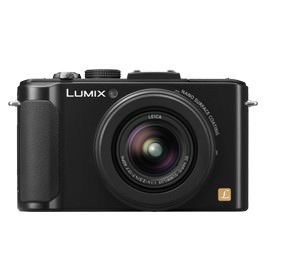 Some of the most exciting developments in digital photography during 2012 has been the rapid and significant improvements in compact cameras. Many of them now offer features, functions and capabilities that could only be found on common DSLRs or full-frame professional DSLRs just a few years ago.
Some of the most exciting developments in digital photography during 2012 has been the rapid and significant improvements in compact cameras. Many of them now offer features, functions and capabilities that could only be found on common DSLRs or full-frame professional DSLRs just a few years ago.
-
Release during July 2012, the Panasonic LUMIX DMC-LX7 is an excellent example of this new breed of compact cameras. Digital photography enthusiasts are sure to like this camera, since its size and features provides everything one would want in a travel camera. Many serious amateurs and professional photographers will be happy to leave their heavy, bulky DSLRs at home during family outings and other fun activities and shoot with the LX7.
-
The feature of the LUMIX DMC-LX7 that is likely to garner much of photographers’ attention is the new and very fast f/1.4–f/2.3 lens. It’s officially a 24mm ultra-wide angle Leica DC VARIO-SUMMILUX lens with 3.8x optical zoom, or the equivalent of 24–90mm in 35mm format. Panasonic states in its press release that, at f/1.4, the brightness of the lens is 400% greater than an f/2.8 lens, plus, at 24mm, this Leica lens provides a 136-percent larger view than a 28mm wide-angle. Even the smallest aperture, f/2.3, at 90mm is also quite fast and bright.
-
Panasonic gave the LUMIX DMC-LX7 an optical configuration that, again, is much more reminiscent of a DSLR. It has 11 elements in 10 groups with 5 aspherical lenses and a total of 9 aspherical surfaces. The dual-sided aspherical surface ED (Extra-low Dispersion) lens is a first in any LUMIX or Panasonic interchangeable lens camera model.
-
In replacing the older LX5 with the new LX7, Panasonic has also made a major advancement in the beauty, sharpness and color richness of images. The typical distortions that are often quite evident in older compact camera technology are difficult to impossible to see on LX7 images, even at the widest setting. This is the result of the latest Nano Surface Coating, which also provides digital photographers with much more control of background blur, or bokeh.
-
As often mentioned in recent PhotographyTalk articles, sensor size is much less important than the total image-processing technology that camera companies put into their cameras. Panasonic has done just that with the LUMIX DMC-LX7. The company has developed a new 1/1.7-inch, 10.1-MP 2 MOS sensor and paired it with the incredible performance of the Venus Engine. One of the most important benefits to digital photographers of these new technologies is that they have a much wider dynamic range to capture images of higher resolution and preciseness, whether they are shooting at the high or low end of ISO sensitivity. According to the specs for the LX7, its ISO range is 80–6,400, and an option to 12,800.
This remarkable sensor/image processor combination in the Panasonic LUMIX DMC-LX7 is also capable of high-speed digital signal output. Continuous shooting speeds, like many of the LX7’s capabilities, duplicate mid-range to pro-level DSLRs, with 11 fps in full resolution (mechanical shutter) and 5 fps when using continuous AF.
-
The LCD monitor in the LUMIX DMC-LX7 is the equal of its other outstanding features. It’s a new 3-inch, 920,000-dot Intelligent LCD display. Again, the details will remind you of much more expensive cameras. The screen technology includes 11 brightness levels that adjust automatically depending on the light level of your shooting environment. This new Panasonic compact camera will also accommodate the optional external Optical Viewfinder.
-
Although the LUMIX DMC-LX7 will deliver excellent video, recording 1080/60p Full-HD, of family gatherings and vacations, it could also be a highly creative tool for anyone enthusiastic to explore high quality video production. The video package provides any number of points of control, so you can develop your video skills. Push the dedicated record button and capture video as you are also shooting stills. Stereo sound recording is standard; and the stereo microphone includes a noise reduction system and an Auto Wind Cut feature. Select the Creative Video mode, giving you control of shutter speed and aperture and, thus, more creative opportunities.
When Panasonic announced its new LUMIX DMC-LX7 Digital Camera (during July 2012), the company press release did not include pricing and availability details. Look for that information in PhotographyTalk’s News Section and a future review of this camera when it becomes available.
People who read this PhotographyTalk.com article also liked:
Your feedback is important to thousands of PhotographyTalk.com fans and us. If this article is helpful, then please click the Like and Re-Tweet buttons at the top left of this article.
Copyright ©2011 Panasonic Corporation of North America
